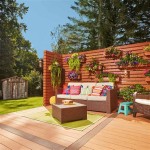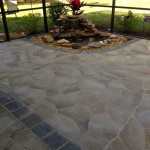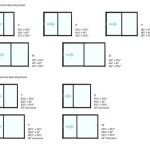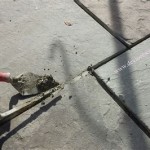Transform Your Outdoor Space With Concrete Patio Makeover Ideas
A concrete patio offers a versatile foundation for outdoor living. It’s durable, relatively low-maintenance, and can be customized in countless ways to create an aesthetically pleasing and functional extension of the home. However, time, weather, and everyday use can leave a concrete patio looking worn and outdated. Instead of completely replacing the patio, a makeover can revitalize the space, increasing its appeal and usability. This article explores a range of concrete patio makeover ideas, focusing on practical techniques and design considerations that can transform an outdoor area into a comfortable and inviting retreat.
Before embarking on a concrete patio makeover, a thorough assessment of the existing surface is crucial. This involves identifying any cracks, spalling (surface flaking), stains, or uneven areas. Addressing these underlying issues is paramount to ensure the longevity and success of any subsequent cosmetic enhancements. Small cracks can often be repaired with concrete patching compounds, while larger, more significant cracks may require professional attention. Cleaning the patio is another essential preliminary step. Pressure washing removes dirt, grime, mold, and mildew, providing a clean canvas for further treatments. A clean surface also allows for a better assessment of the true condition of the concrete.
Enhancing Aesthetics with Decorative Concrete Overlays
One of the most effective ways to transform a concrete patio is by applying a decorative concrete overlay. Overlays are thin layers of cement-based materials that are applied over the existing concrete surface. These overlays can mimic the appearance of various materials, such as brick, stone, tile, or even wood, offering a cost-effective alternative to installing these materials directly. Decorative overlays are available in a wide range of colors, textures, and patterns, allowing for complete customization of the patio's appearance.
Stamped concrete overlays are a popular choice, providing a realistic replication of natural stone or brick. The stamping process involves pressing textured mats into the wet overlay, creating intricate patterns and designs. Stencils can also be used to create unique geometric patterns or borders. Another option is to use a spray-down overlay, which creates a textured surface that is slip-resistant and visually appealing. This technique involves spraying a thin layer of concrete mix onto the existing surface and then using various tools to create texture and patterns. Micro-toppings are another type of overlay, offering a smooth, modern look. These are thin layers of cement-based material that can be troweled onto the surface, creating a seamless finish that can be stained or sealed.
The application of a decorative concrete overlay is a multi-step process that requires careful preparation and execution. First, the existing concrete surface must be thoroughly cleaned and prepared. This may involve patching any cracks or imperfections and applying a bonding agent to ensure proper adhesion of the overlay. Next, the overlay material is mixed according to the manufacturer's instructions and applied evenly over the surface. Depending on the desired effect, the overlay can be stamped, stenciled, or textured. Finally, the overlay is allowed to cure properly, and a sealant is applied to protect the surface and enhance its appearance.
Choosing the right type of overlay depends on several factors, including the desired aesthetic, the condition of the existing concrete, and the budget. Stamped overlays tend to be more expensive than spray-down overlays, but they offer a more realistic and intricate look. Micro-toppings are a good option for creating a modern, minimalist look, but they may not be suitable for patios with significant cracks or imperfections. Consulting with a concrete specialist can help determine the best type of overlay for a specific project.
Adding Color and Protection with Concrete Stains and Sealers
Concrete stains and sealers are another effective way to transform a concrete patio. Stains penetrate the concrete surface, adding color without covering up the natural texture and variations. Sealers, on the other hand, protect the concrete from moisture, stains, and wear, while also enhancing the color and sheen of the stained or unstained surface.
Concrete stains are available in two main types: acid-based and water-based. Acid-based stains react chemically with the concrete, creating a permanent color that will not fade or peel. These stains produce a mottled, variegated effect, adding depth and character to the concrete. Water-based stains, on the other hand, are more environmentally friendly and offer a wider range of colors. They do not react chemically with the concrete, but they penetrate the surface and create a durable, long-lasting color. Water-based stains are easier to apply and clean up than acid-based stains, making them a popular choice for DIY projects.
The application of concrete stain involves several steps. First, the concrete surface must be thoroughly cleaned and prepared. This may involve etching the surface with muriatic acid to open the pores and allow the stain to penetrate more effectively. Next, the stain is applied evenly using a brush, roller, or sprayer. The number of coats will depend on the desired color intensity. After the stain has dried, a sealant is applied to protect the surface and enhance its appearance.
Concrete sealers are available in a variety of formulations, including acrylics, polyurethanes, and epoxies. Acrylic sealers are a cost-effective option that provides good protection against moisture and stains. Polyurethane sealers are more durable and offer better resistance to abrasion and chemicals. Epoxy sealers are the most durable option, providing excellent resistance to chemicals, abrasion, and impact. They are often used in high-traffic areas or where there is a risk of spills or stains.
The choice of sealer depends on the desired level of protection and the expected wear and tear on the patio. Acrylic sealers are a good option for patios that are not exposed to heavy traffic or harsh chemicals. Polyurethane sealers are a better choice for patios that are used frequently or where there is a risk of spills or stains. Epoxy sealers are the best option for patios that are exposed to heavy traffic, chemicals, or harsh weather conditions.
In addition to providing protection, sealers can also enhance the appearance of the concrete. Some sealers are available in a glossy finish, which adds a shine to the surface and enhances the color of the stain. Other sealers are available in a matte finish, which provides a more natural look. Some sealers also contain UV inhibitors, which protect the concrete from fading due to sunlight exposure.
Creating a Focal Point and Enhancing Ambiance with Patio Features
Beyond surface treatments, integrating specific features can dramatically transform a concrete patio. These elements can add functionality, visual interest, and create a more inviting outdoor living space.
Built-in seating is a popular option, providing comfortable and convenient seating for guests. Benches can be constructed from concrete blocks, brick, or wood, and can be customized to fit the size and shape of the patio. Incorporating storage into the seating can also maximize space and provide a place to store outdoor cushions, blankets, or gardening tools.
Fire pits are another popular addition, creating a warm and inviting atmosphere for outdoor gatherings. Fire pits can be built from concrete blocks, stone, or brick, and can be fueled by wood, propane, or natural gas. A fire pit can serve as a focal point for the patio, providing a cozy place to relax and entertain guests.
Water features, such as fountains or small ponds, can add a sense of tranquility and serenity to the patio. Fountains can be prefabricated or custom-built, and can be made from a variety of materials, including concrete, stone, or metal. A small pond can provide a habitat for aquatic plants and animals, adding a natural touch to the patio.
Outdoor kitchens are becoming increasingly popular, allowing homeowners to prepare and enjoy meals outdoors. An outdoor kitchen can include a grill, countertops, storage cabinets, and a sink. The kitchen can be built from concrete blocks, brick, or wood, and can be customized to fit the size and shape of the patio. An outdoor kitchen can transform the patio into a fully functional outdoor living space.
Landscaping elements, such as planters, flower beds, and trees, can soften the hard lines of the concrete and add color and texture to the patio. Planters can be placed around the perimeter of the patio or used to create focal points. Flower beds can be planted with a variety of flowers, shrubs, and herbs. Trees can provide shade and privacy, creating a more comfortable outdoor living space. Vertical gardens, using trellises or stacked planters, can be used to add greenery to small patios or to create a privacy screen.
Lighting is an essential element for creating ambiance and extending the usability of the patio into the evening hours. String lights, pathway lights, and spotlights can be used to illuminate the patio and create a warm and inviting atmosphere. Consider using energy-efficient LED lights to save money on electricity bills. Integrated lighting within steps or seating areas adds a safety feature as well as a decorative touch.
Furniture selection is also crucial. Choose furniture that is durable, weather-resistant, and comfortable. Consider the size of the patio and the intended use when selecting furniture. A dining set is a good option for those who enjoy outdoor meals, while lounge chairs and sofas are ideal for relaxing and entertaining guests. Outdoor rugs can add color and texture to the patio, and can also help to define different zones within the space. Umbrellas or pergolas can provide shade and protection from the elements, making the patio more comfortable during hot weather.
By carefully considering the design and incorporating these features, a concrete patio can be transformed from a plain, utilitarian surface into a beautiful and functional outdoor living space. The transformation ultimately enhances the homeowner's enjoyment and increases the value of the property.

Resurfacing A Concrete Patio For Budget Diy Makeover Fab Everyday

Concrete Patio Ideas Transform Your Outdoor Space With These Trending Shrubhub

Diy Concrete Patio Makeover The Frugal South

26 Best Patio Decorating Ideas Decor On A Budget

Eyesore To Outdoor Oasis Backyard Patio Reveal Sima Spaces

40 Paver Patio Ideas To Help You Design Your Outdoor Space

Concrete Patio Ideas Transform Your Outdoor Space With These Trending Shrubhub

9 Simple And Modern Concrete Patio Ideas On A Budget You Will Love One Number Life

Our Backyard Patio Makeover And Tour Modern Glam

Unique Patio Designs Green Lady Masonry
Related Posts








